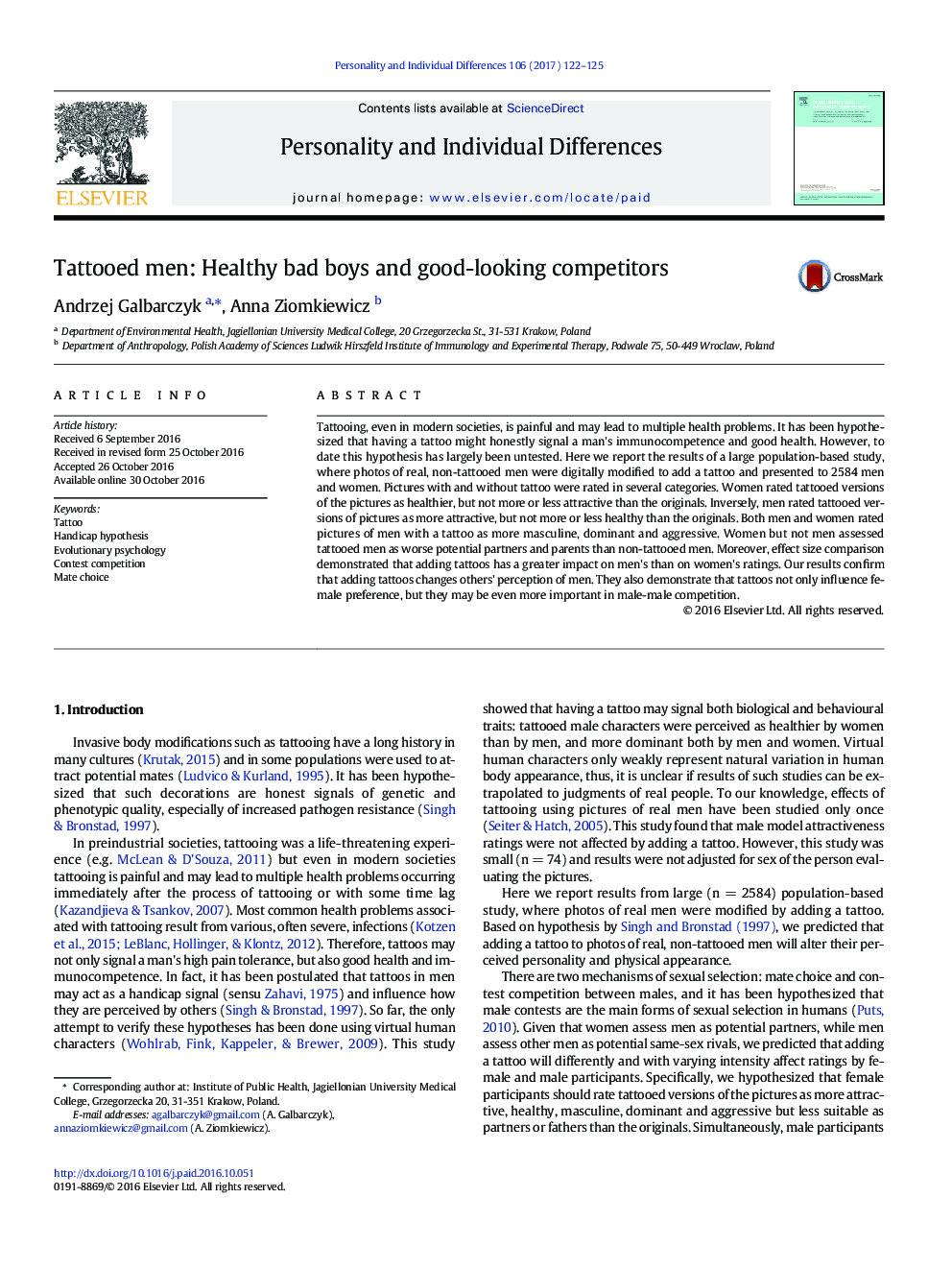| کد مقاله | کد نشریه | سال انتشار | مقاله انگلیسی | نسخه تمام متن |
|---|---|---|---|---|
| 5036189 | 1472012 | 2017 | 4 صفحه PDF | دانلود رایگان |
- Tattoos change others' perception of men.
- Tattoos have a greater impact on men's than on women's ratings.
- Men's tattoos may attract the opposite sex as a signal of good health.
- Men's tattoos may intimidate same-sex rivals as a signal of physical preponderance.
Tattooing, even in modern societies, is painful and may lead to multiple health problems. It has been hypothesized that having a tattoo might honestly signal a man's immunocompetence and good health. However, to date this hypothesis has largely been untested. Here we report the results of a large population-based study, where photos of real, non-tattooed men were digitally modified to add a tattoo and presented to 2584 men and women. Pictures with and without tattoo were rated in several categories. Women rated tattooed versions of the pictures as healthier, but not more or less attractive than the originals. Inversely, men rated tattooed versions of pictures as more attractive, but not more or less healthy than the originals. Both men and women rated pictures of men with a tattoo as more masculine, dominant and aggressive. Women but not men assessed tattooed men as worse potential partners and parents than non-tattooed men. Moreover, effect size comparison demonstrated that adding tattoos has a greater impact on men's than on women's ratings. Our results confirm that adding tattoos changes others' perception of men. They also demonstrate that tattoos not only influence female preference, but they may be even more important in male-male competition.
Journal: Personality and Individual Differences - Volume 106, 1 February 2017, Pages 122-125
